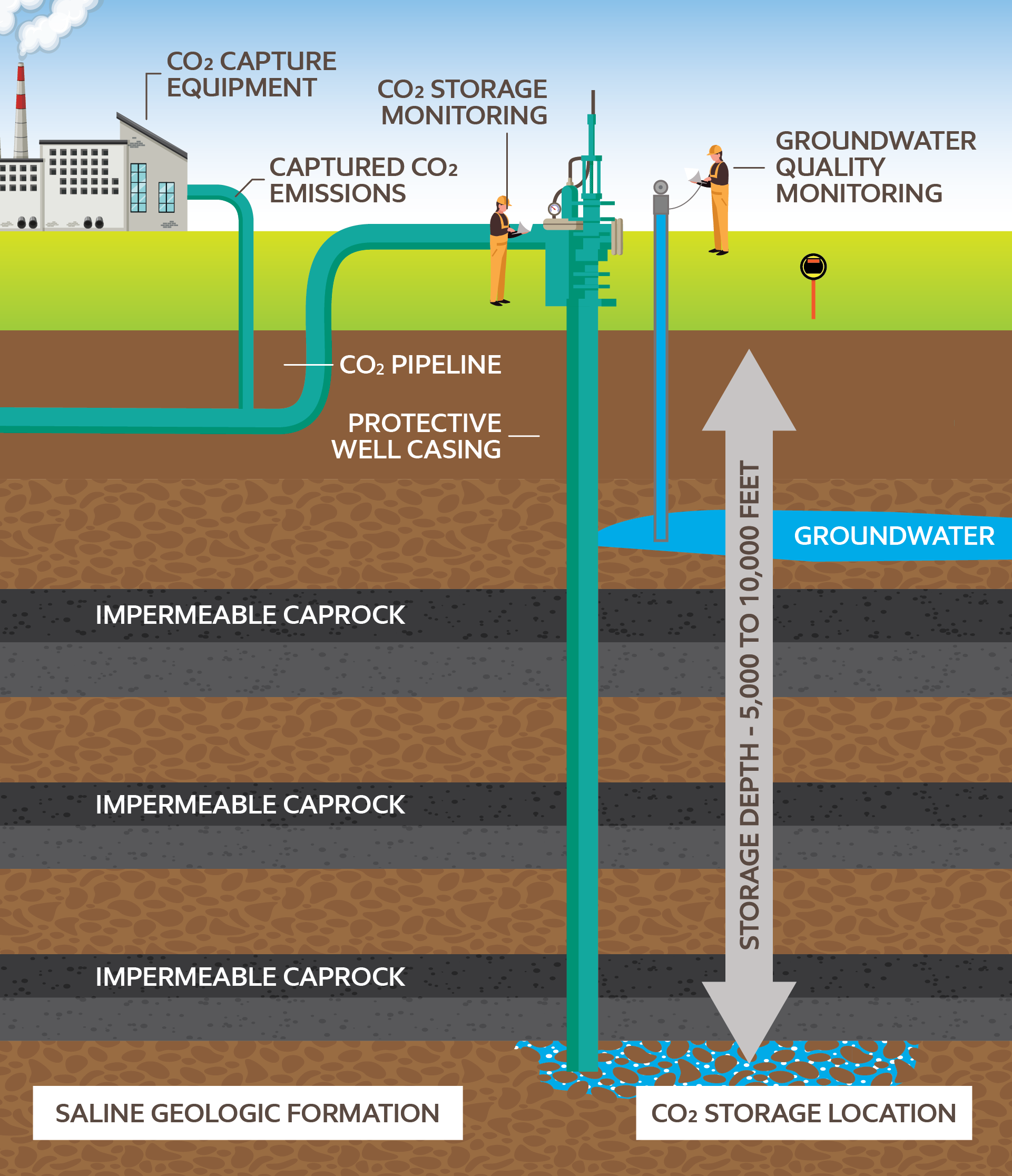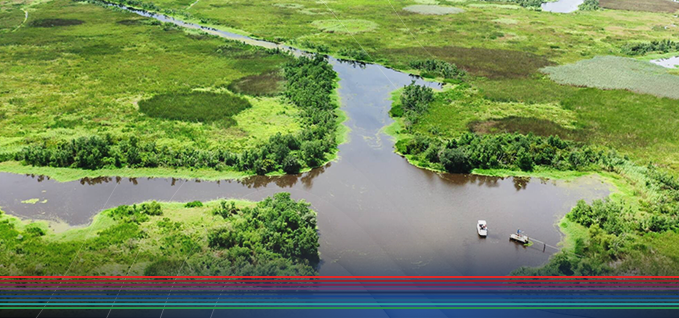Carbon Capture, Utilization and Storage, or CCUS, is a process that will allow industries that emit carbon dioxide (CO2) to both maintain their business plans and reduce CO2 emissions. First, it uses special equipment to remove the CO2 from their facilities’ exhaust before it reaches the air. Once captured, the CO2 can either be provided to companies for other uses or transported by pipeline to an underground storage area for safe and permanent storage. The same type of impermeable rock layers that have kept oil, natural gas and naturally occurring CO2 locked underground for millions of years can safely store CO2.
Proper storage areas have special characteristics. First, part of the rock formation must be porous because the pores provide the space in which the CO2 is stored. The second is permeability, meaning the porous rock is arranged in layers that allow the CO2 to move through the rock formation. The third is the existence of a cap rock, an impermeable rock layer that acts as a seal trapping the CO2 underground. Finally, the rock formation must be deep enough to have multiple layers of rock above it and to be subject to enough pressure to keep the CO2 stored within the pores of the rock.
CO2 is compressed from a gas into an almost liquid state before being put underground through a well into the rock formation. Once underground, some of the CO2 will remain lower in the pore space, while other parts will float up and stay trapped under the cap rock. A large portion of the CO2 will dissolve into the brine that is also trapped in the pore space. Over time, some of this dissolved CO2 will react with the minerals in the rock and solidify.
ExxonMobil Pipeline Company will leverage its decades of experience operating underground storage facilities for various energy products to safely operate and monitor the subsurface CO2 storage sites once they start operations. A combination of technologies is planned to monitor for and detect any potential leaks at the atmospheric, near-surface and deep sub-surface levels.
For more information, visit the National Energy Technology Laboratory.
 How permanent storage works
How permanent storage works

- Compared to drilling for natural gas, instead of drilling through rock to let the trapped gas out, carbon dioxide (CO2) is put thousands of feet underground below thick, impermeable rock layers that act as a lid to keep the stored CO2 in place. They are similar to the rock layers that have kept oil, natural gas and naturally occurring CO2 underground for millions of years.
- Potential CO2 storage sites are carefully selected only after undergoing rigorous analysis to ensure they are geologically suitable. This analysis helps mitigate the risk of the CO2 migrating to other formations or to the atmosphere. The CO2 is also stored thousands of feet underground, well below any sources of drinking water, or under the sea floor.
- Industry has been safely placing CO2 underground for decades, successfully demonstrating the capability to safely and permanently store CO2.
- Naturally occurring underground deposits of CO2 have stayed locked deep underground for millions of years.
- Once stored, the storage sites will be constantly monitored. A combination of technologies is planned to detect any potential leaks at the atmospheric, near-surface and deep sub-surface levels.
 CO2 storage safety in action
CO2 storage safety in action
- Government regulations require extensive study of the underground geology to demonstrate a site is safe for CO2 storage.
- The U.S. Environmental Protection Agency (EPA) regulates the underground storage of carbon dioxide (CO2). In some cases, EPA has delegated its regulatory powers to state agencies.
- Underground storage sites must meet federal construction, operations, monitoring and recordkeeping requirements.
